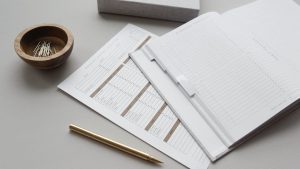Live forex charts are real-time graphical representations of currency exchange rates. They are used by traders and investors to analyze the market and make informed decisions. Forex charts display the price movements of currency pairs and other financial instruments.
Forex charts are essential for traders as they provide a wealth of information on the market. They show the price action of currency pairs, including the opening and closing prices, highs and lows, and trends over time. By analyzing these charts, traders can identify patterns and trends and make informed trading decisions.
Reading a forex chart can seem daunting at first, but with a little practice and knowledge, it becomes easier. Here are some key elements of a forex chart and how to read them:
1. Currency Pair: The first thing you will see on a forex chart is the currency pair being traded. This is usually displayed in the top left or right corner of the chart. The currency pair is represented by a three-letter code. For example, EUR/USD represents the euro and the US dollar.
2. Timeframe: The timeframe is the period over which the price action is displayed. This can range from a minute to a month, depending on the chart. The timeframe is usually displayed at the bottom of the chart.
3. Price Axis: The price axis shows the price levels of the currency pair being traded. The axis is usually on the right-hand side of the chart and can be displayed in either a linear or logarithmic scale.
4. Candlesticks: Candlesticks are the most common charting method used in forex trading. Each candlestick represents a specific time period, and the shape of the candlestick indicates the price movement during that time. A green or white candlestick represents a bullish movement, while a red or black candlestick represents a bearish movement.
5. Indicators: Indicators are tools used by traders to analyze market trends and make trading decisions. They can be added to a forex chart to provide additional information. Some common indicators include moving averages, relative strength index (RSI), and stochastic oscillator.
When analyzing a forex chart, traders should look for patterns and trends to identify potential trading opportunities. For example, if the price is consistently making higher highs and higher lows, this could indicate an uptrend. Conversely, if the price is consistently making lower highs and lower lows, this could indicate a downtrend.
Traders should also pay attention to key support and resistance levels on the chart. These levels represent areas where the price has historically struggled to move past or has bounced back from. Traders can use these levels to set stop-loss orders and take-profit targets.
In conclusion, live forex charts are an essential tool for traders and investors to analyze the market and make informed decisions. By understanding the key elements of a forex chart and how to read them, traders can identify patterns and trends and capitalize on potential trading opportunities. It takes time and practice to become proficient at reading forex charts, but with dedication and persistence, traders can improve their skills and become successful in the forex market.





